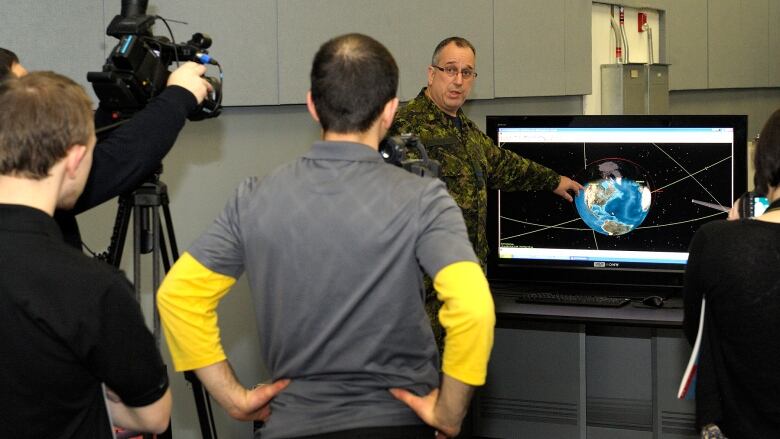North Bay satellite tracks space junk
Canadian military satellite like the "air controller" of space debris

A space surveillance centre in North Bay has long been tracking aircraft in the skies, andits newest project is taking them to even higher altitudes:into outer space.
The 22 Wing North American Aerospace Defense Command (NORAD) base tracksspace junk using Sapphire, Canadas first military satellite. That satellite can survey objects orbiting at up to 40,000 kilometres in altitude.

The satellite system then sends the data and photosback to the Space Surveillance Operations Centre in North Bay. That information also gets shared with the Department of National Defence in the United States.
Space junk, man-made or natural, can be anything that poses a threat to satellites, said Captain Thomas Earle, the surveillance of space operations officer at the Canadian Armed Forces in North Bay.
Its basically like an air traffic controller.- Captain Thomas Earle
Bolts, exploding pieces of metal the majority of those objects are still floating around in deep space, he said.
According to its website, 22 Wing is responsible for the surveillance, identification, warning, and control of Canadian aerospace, whose job it is to defend Canadians and protect national sovereignty.
The satellite, monitored out of North Bay, was launched from a site in India in February 2013. After months of technical checks, Sapphire was set to begin official monitoring in November of 2013. The satellite works alongside 29 other radar and optical sensors around the world.
Its basically like an air traffic controller, Earle said. All the data from the satellites puts together a picture of whats in space. As long as everything stays separate, there are no problems.
The satellite project came in $10 million under budget, meaning construction and development cost just over $96 million in total.
If a piece of space debris is on course to collide with a satellite, the hopes are that it can be tracked soon enough to allow forlarger satellites to manoeuvre up or down to avoid being hit.
A release from 22 Wing Squadron says there are currently more than 23,000 man-made objects floating in space.












_(720p).jpg)


 OFFICIAL HD MUSIC VIDEO.jpg)
.jpg)



























































































